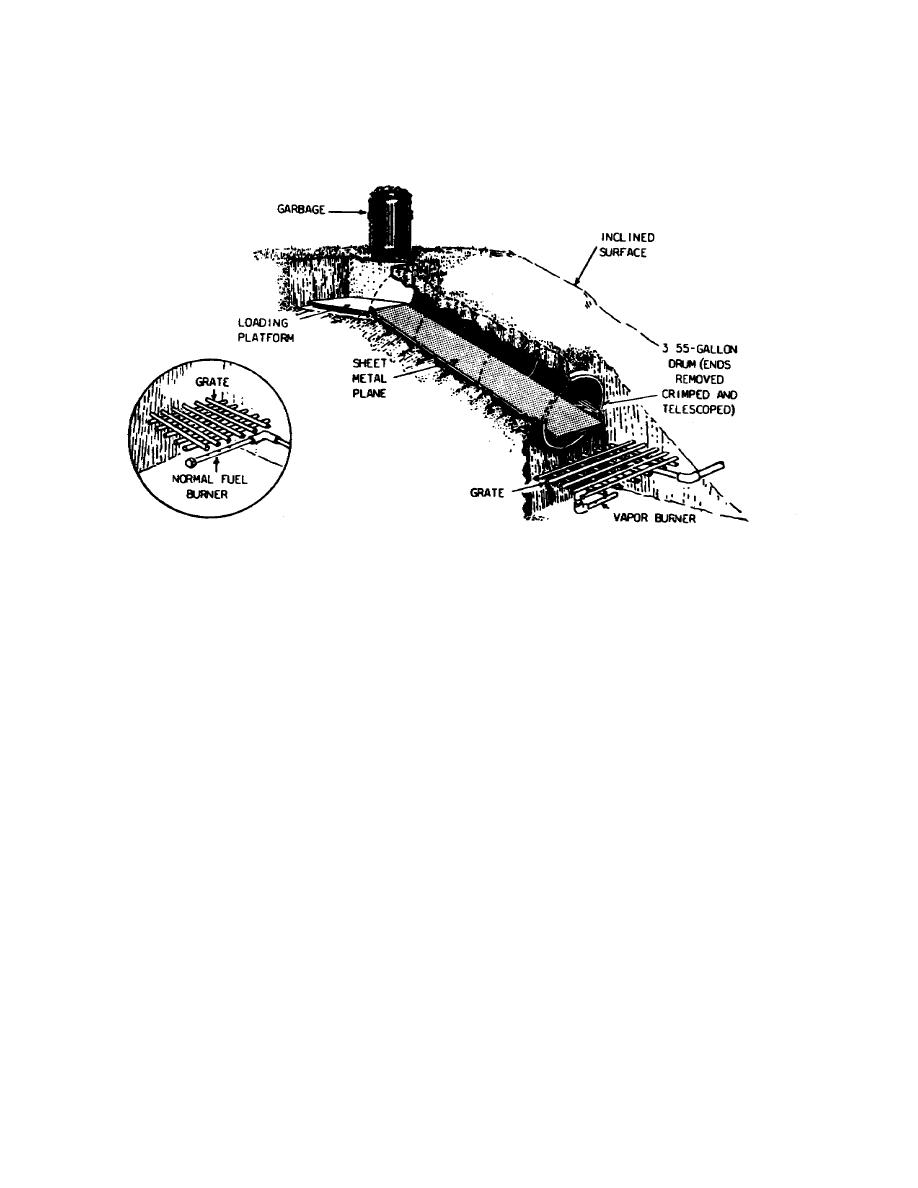
(e) After the incinerator becomes hot, garbage is placed on the stroking
platform. As the garbage becomes dry, it is pushed through the telescoped drums in
small amounts to burn. Final burning takes place on the grate.
Figure 2-2. Inclined plane incinerator.
2-6.
FIELD DISPOSAL OF RUBBISH
Rubbish consists of wastes which originate in the field tent quartering areas,
latrines, medical areas, administrative and office areas, supply and depots, etc.
Rubbish includes items such as wastepaper, plastics, wood, metal, glass, ashes,
splints, and cloth. Rubbish may be classified as combustible or noncombustible. Since
a unit in the field generates a lot of waste, it can damage our environment. To protect
the environment, a simple rule is, "If you brought it to the field, then bring it back." All
areas need to be policed on a daily basis and before the unit leaves. All refuse and
garbage must be returned to garrison or the DEH approved dump. None will be buried
in the field if the unit is to be there for a day.
a. Wire. All communication, concertina, and barbed wire, etc. must be collected
and returned to the installation when training is completed. If refuse or wire was left
from previous exercises, it is to be picked up, too.
b. Burying of Rubbish. In temporary camp or on bivouac, all rubbish usually is
buried in pits or in trenches with the garbage. If this is done, care should be taken to
flatten the tin cans and break down the boxes before they are added to the rubbish.
c. Incineration of Rubbish. In carps where the length of stay is over 1 week,
the combustible rubbish is either buried or hauled to a suitable disposal site. The barrel
incinerator is made from a 55-gallon drum by cutting out both ends, punching many
MD0162
2-6




 Previous Page
Previous Page
